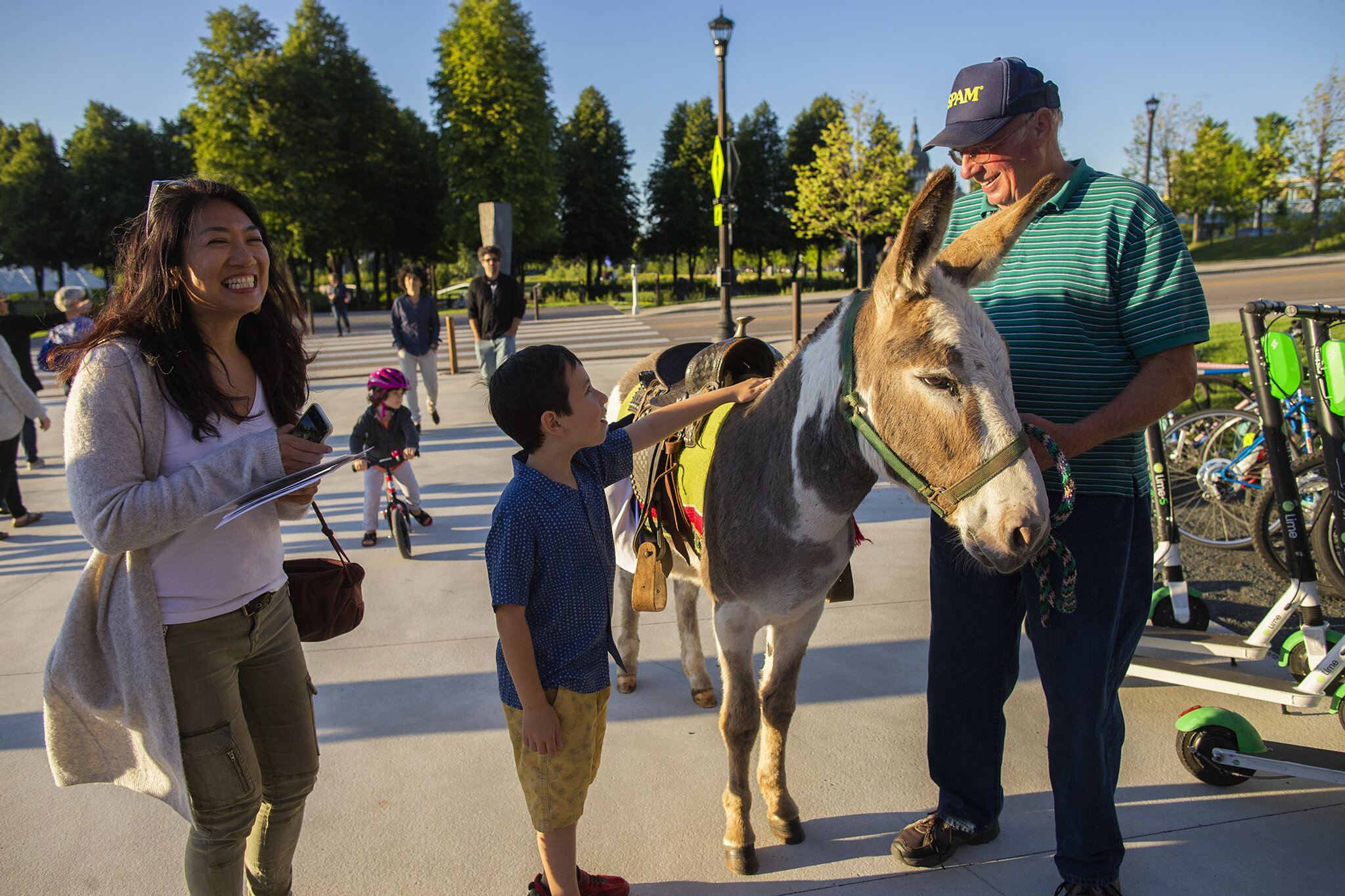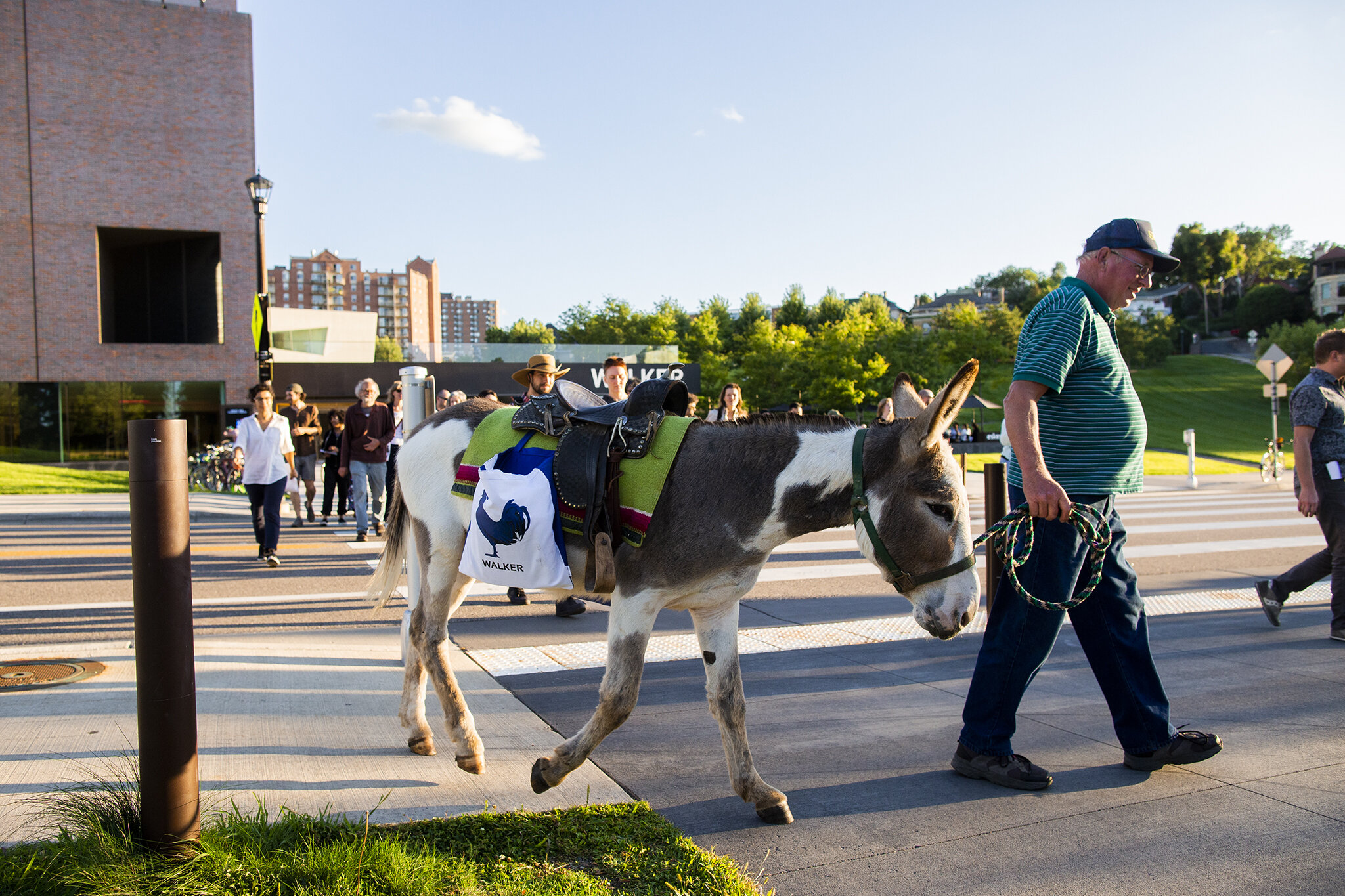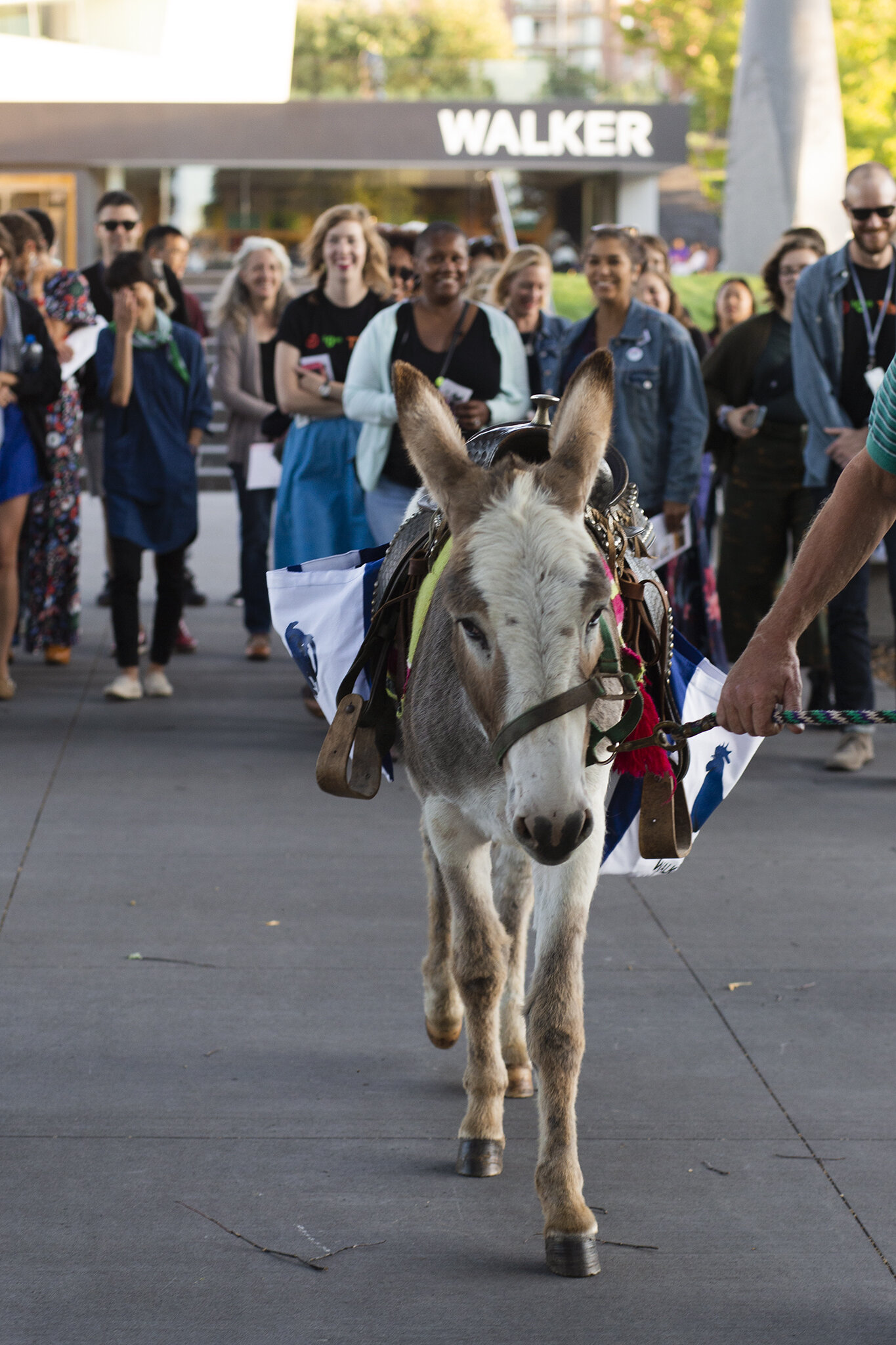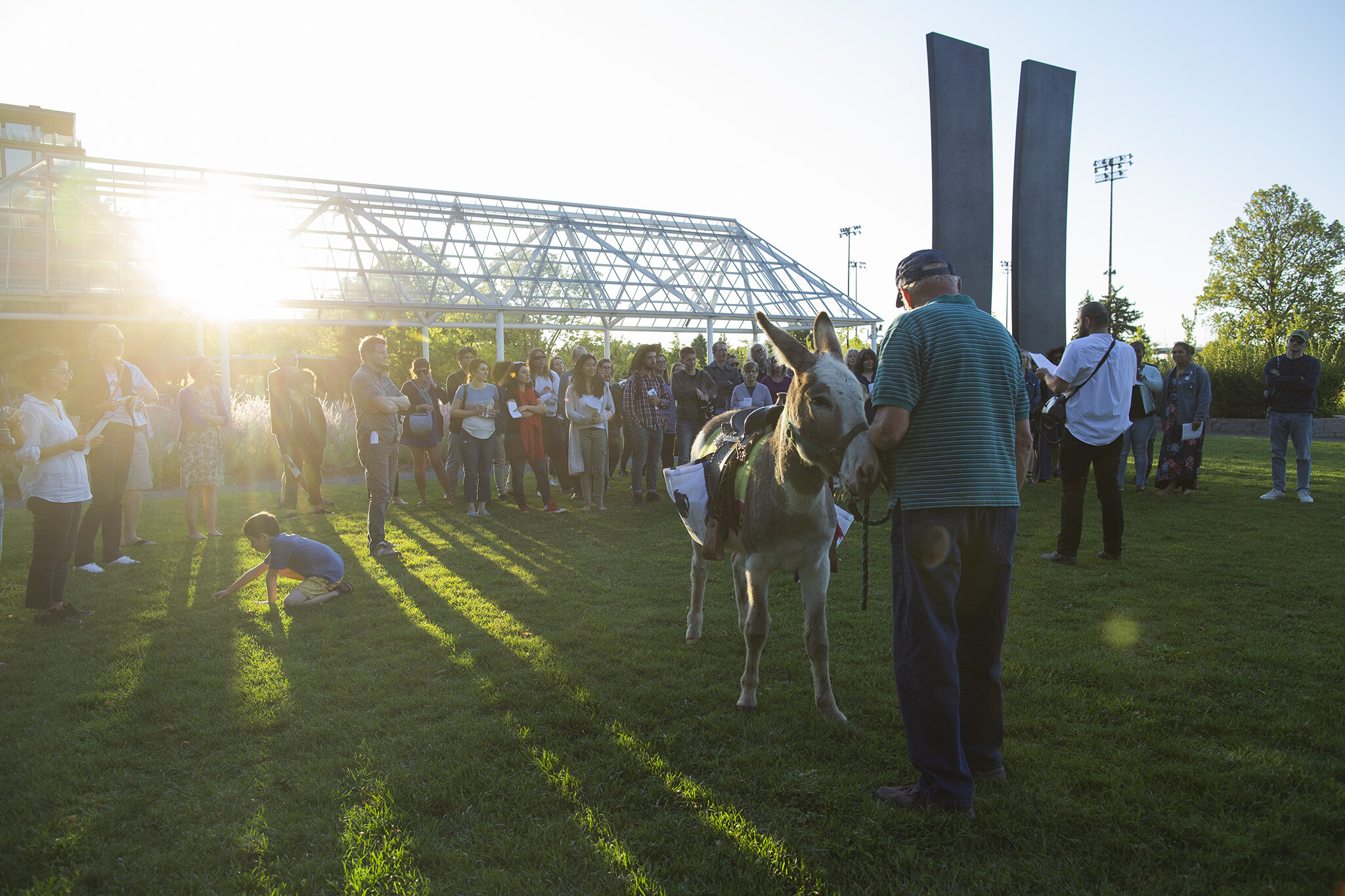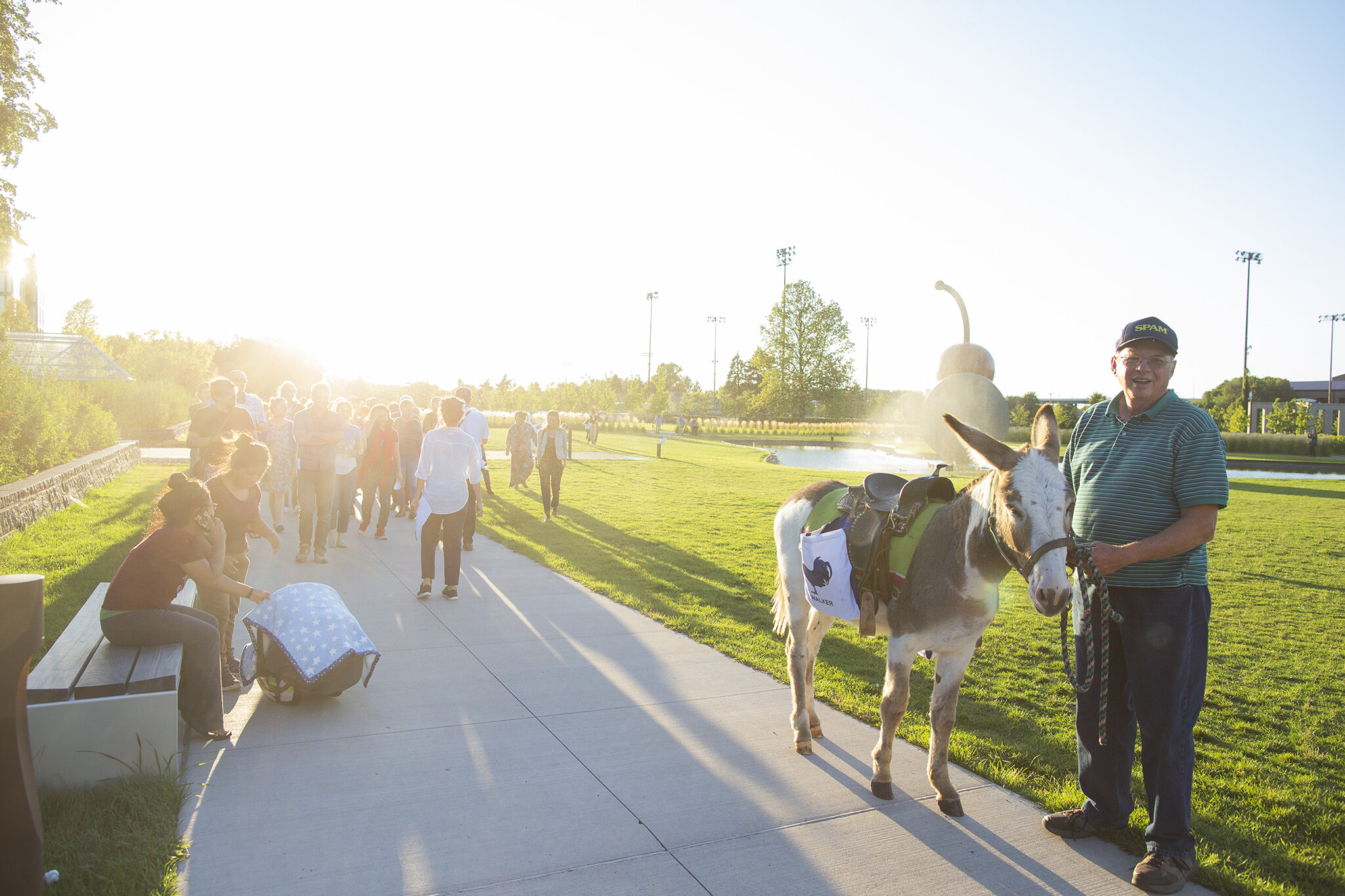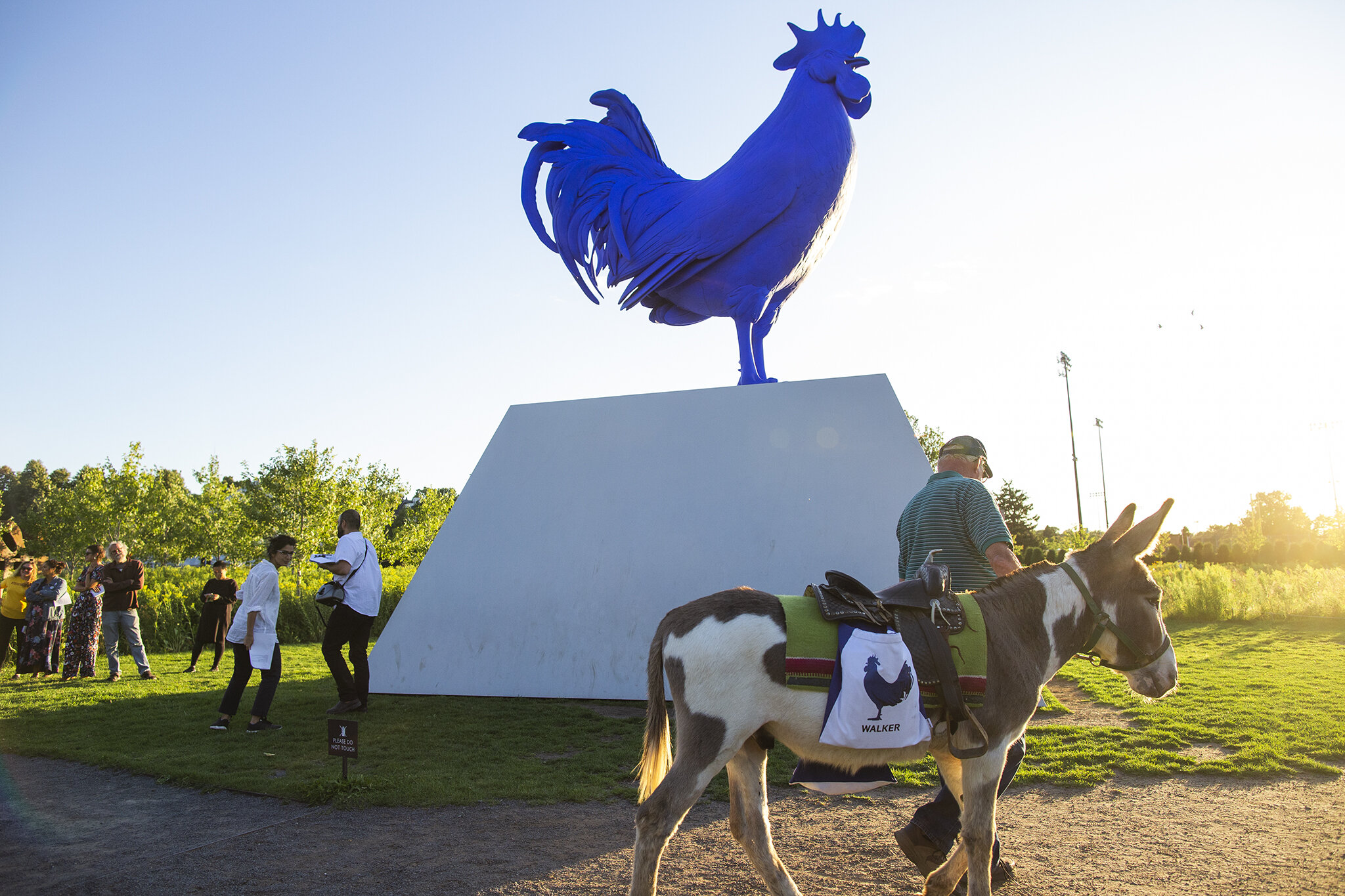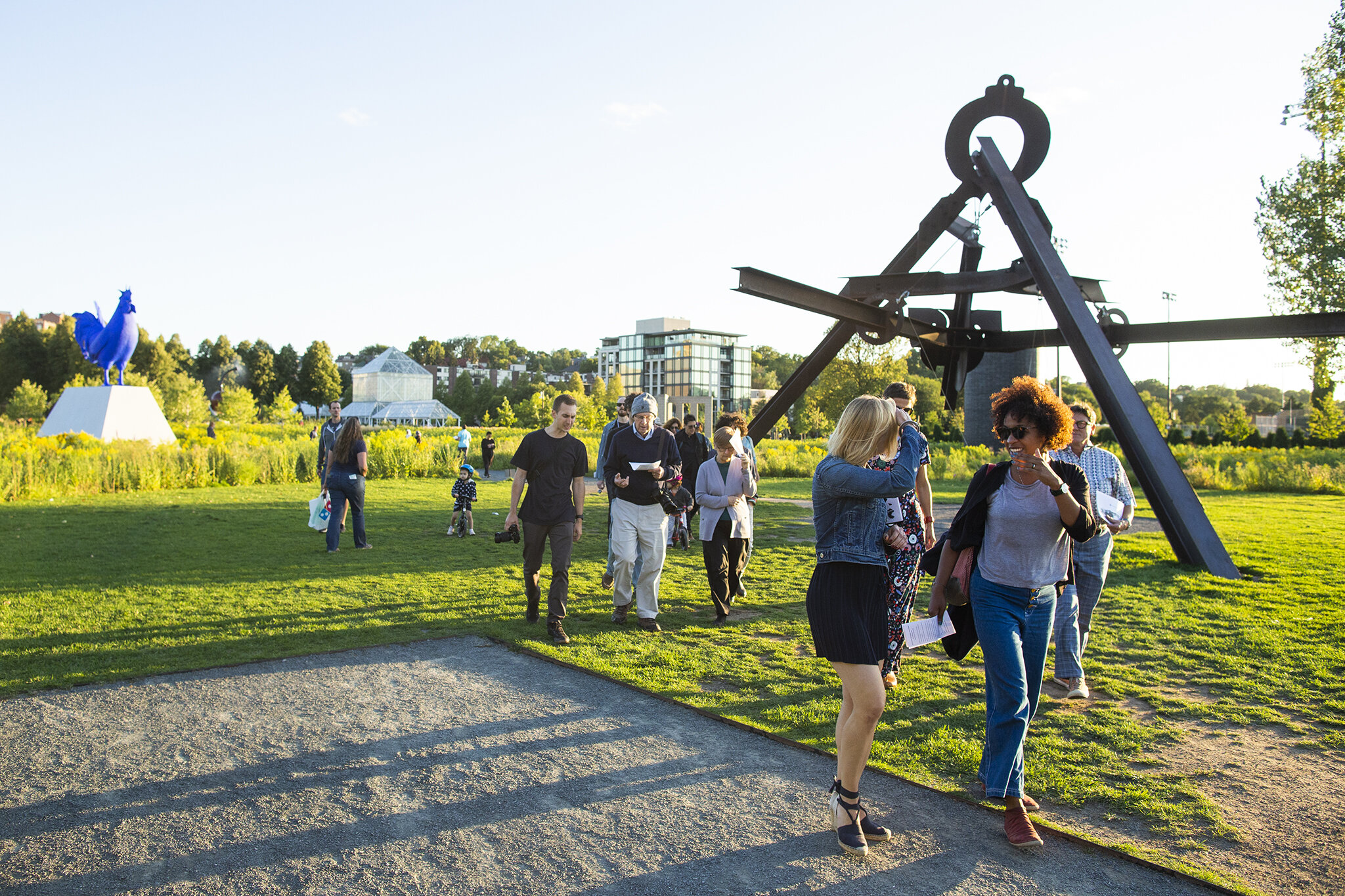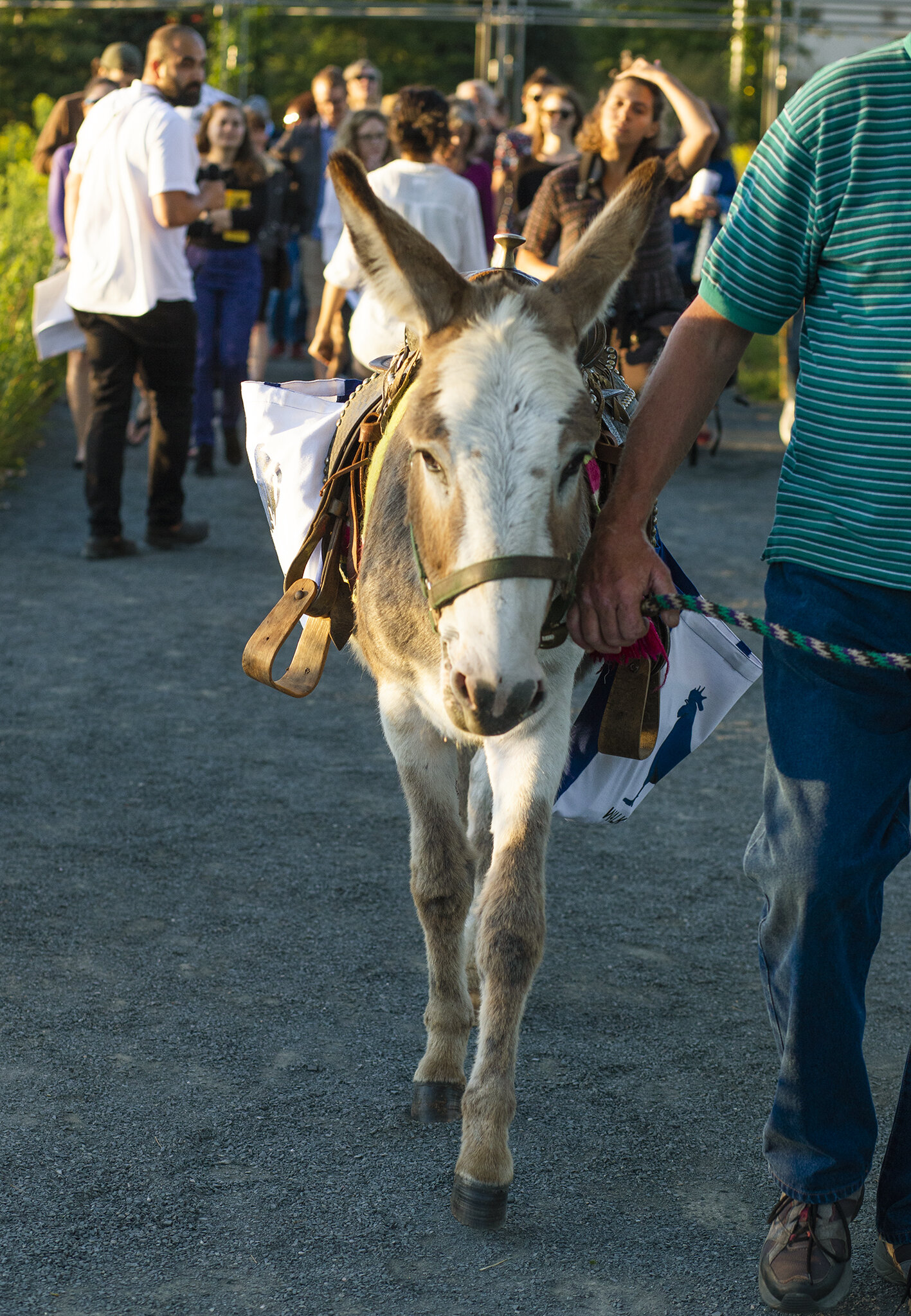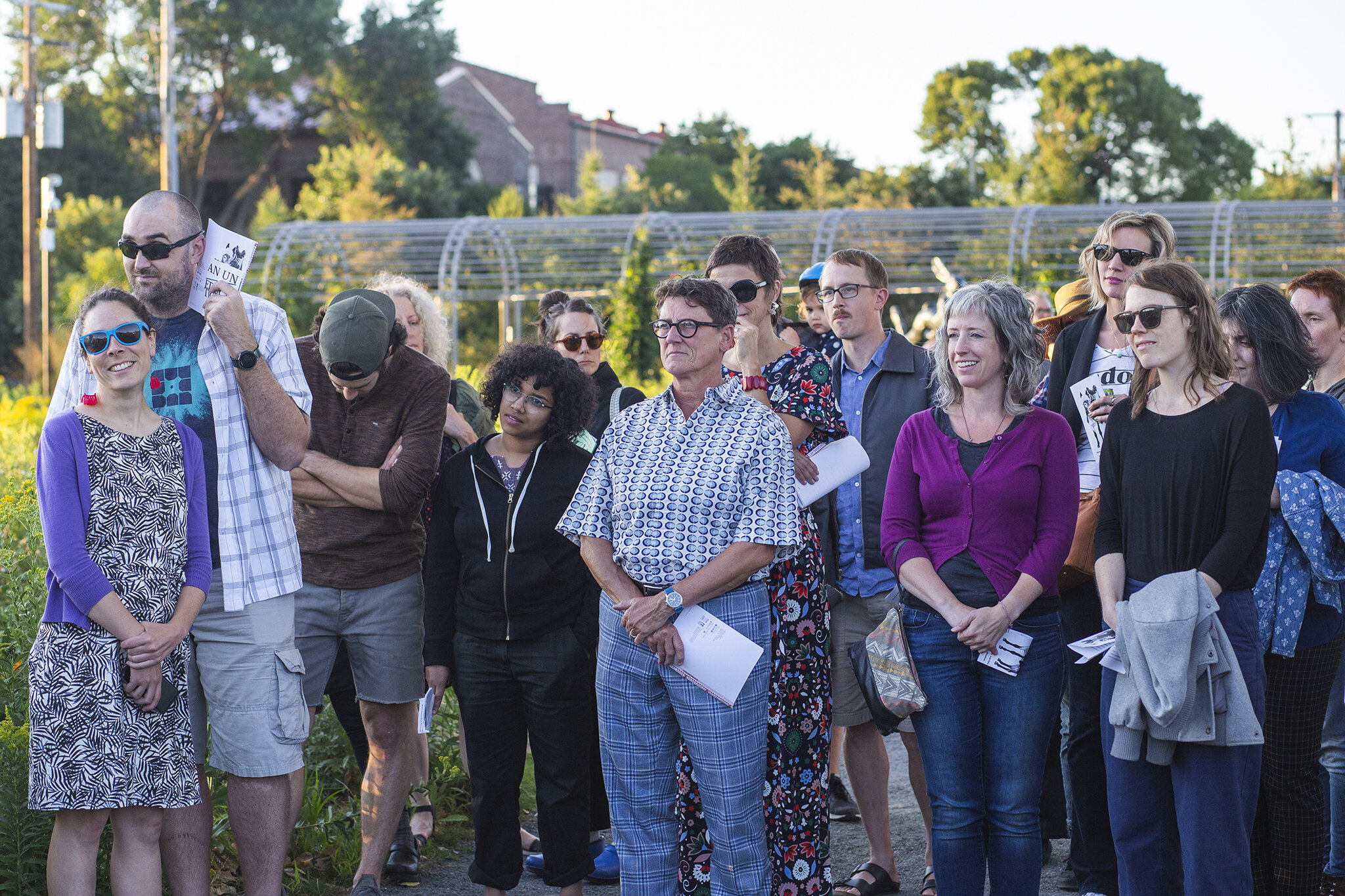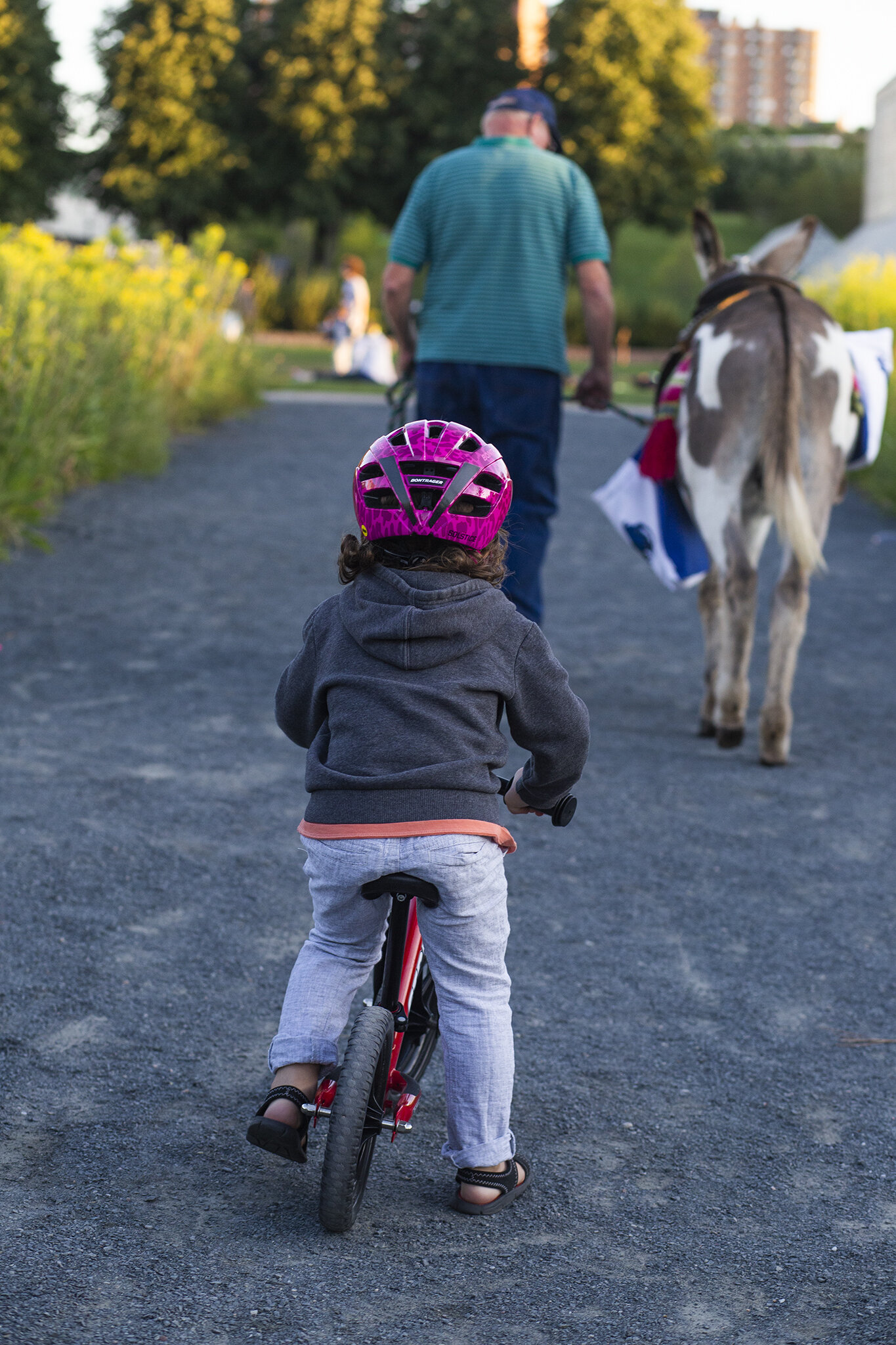Donkeyfull Mind, 2019, Walker Art Museum
"Inspired by Al-Ghazali’s story of outlaws offering educational advice, Pedram Baldari and Nooshin Hakim Javadi invited a donkey to the Minneapolis Sculpture Garden, its saddle bags heavy with art history books. The donkey’s garden tours conjure another set of stories: the tales of Molla Nasreddin, a putatively wise man who is in constant conflict with his beast. The satires pit human folly against asinine stubbornness, never settling on where wisdom may be found—in man or beast." By Christina Schmid at Walker Art Magazine
Full article here: https://mnartists.walkerart.org/an-un-education
Donkeyfull Mind performance/social experiment is a multilayered performance commissioned by Walker Art Museum and MN Artists Org.
This piece speaks to different layers of power dynamics. One embedded in Education, One in the institutional hierarchy and in specific Art institutions and their position of authorship/ownership/legitimization of contents and contexts and one to Immigration/visible and invisible borders and access.
In this performance, we gave a Donkey led tour throughout the day to Minneapolis Sculpture Garden at Walker Art Center. They Donkey in his Walker Art Center saddles bags carried Walker Art Museum catalogs of the garden, Stories of Mullah Nasreddin, Graduation Pins, The Tour Scripts/Mullah Nasreddin version of art pieces' didactic in the garden, Artist statement and educational materials to be distributed among the audience.
Education
Story of Al-Ghazali and bandits: an Iranian scholar, Al Ghazali, in the 12th century. In this story, he is traveling with a caravan from Neyshabur, where he studied at the university for many years, back to Tus, his hometown. Bandits stop their caravan and ask for everything. When they come to Ghazali, who has a donkey loaded with bags, he starts crying and begging them to take everything, but leave the bags alone. When they open the bags, they see lots of papers and notes. "What are these that are so important to you? These are bunch of papers," they say. He answers, "This is all of my knowledge on the back of this donkey. Without them, I will go back to zero!" The leader of the bandits says, "Then what is the difference between this donkey and you, both carrying papers around, while both of your minds are worth nothing?" In one of his lectures, Ghazali refers to this bandit as his greatest teacher, and the reason he became a great scholar--rather than the education he had in university.
Position of Authorship and Institutional Legitimacy
This tour was based on rehearsals with the donkey through which we determined which sculpture the donkey is comfortable to stay by, access to and find fine to hang around. Then based on the Donkey's preferences we adopted Mullah Nasreddin's stories to replace the didactic of each piece we made a stop at. It means at each piece instead of talking about the actual didactic we recited a story of Mullah Nasreddin in correspondence with the work that was in front of us. Mullah Nasreddin is a wise fool and his stories have informed Sufis since the middle ages, scholars and philosophers especially in Iran but ultimately in South West Asia. His humorous way of criticizing institutional power, status quo and hierarchy is still relevant and are used widely in teaching children in Iran. For this piece among the 300 stories translated in English, we picked those that closely could talk to visual, conceptual or themes of the art works at the garden.
Immigration and Access
Why A Donkey?
Mullah Nasreddin's stories one way or another revolve around his choice of disciples and companions. No one could compete with his donkey in that regard. His donkey was his witness, his student, his vehicle, and his way of breaking norms by refusing to ride a horse while he was viewed in high regard as the top scholar of the academia and also a beast with whom he struggled sometimes.
For us the paper trail of getting access for a donkey to the garden has become a part of the piece, our contract with the city and the museum. Who is in charge of what and how to deal with a donkey in an urban "cultural garden." This farm animal radicalized the space in a way that creates peculiarity. A space where most of its visitors are not there for the arts but to picnic or date or for a leisurely walk. Who is in charge of the animal waste, what tools are going to be used, how the animal enters and how it exits, where to park the trailer, and what insurance is required for this farm animal was his first time carefully stepping on a sidewalk or for that matter anything but dirt and grass.
In our statement, we announced to the public that since the U.S. would not grant a tourist visa for Mullah Nasreddin as an Iranian Scholar we had to use his best companion and closest disciple the donkey.

